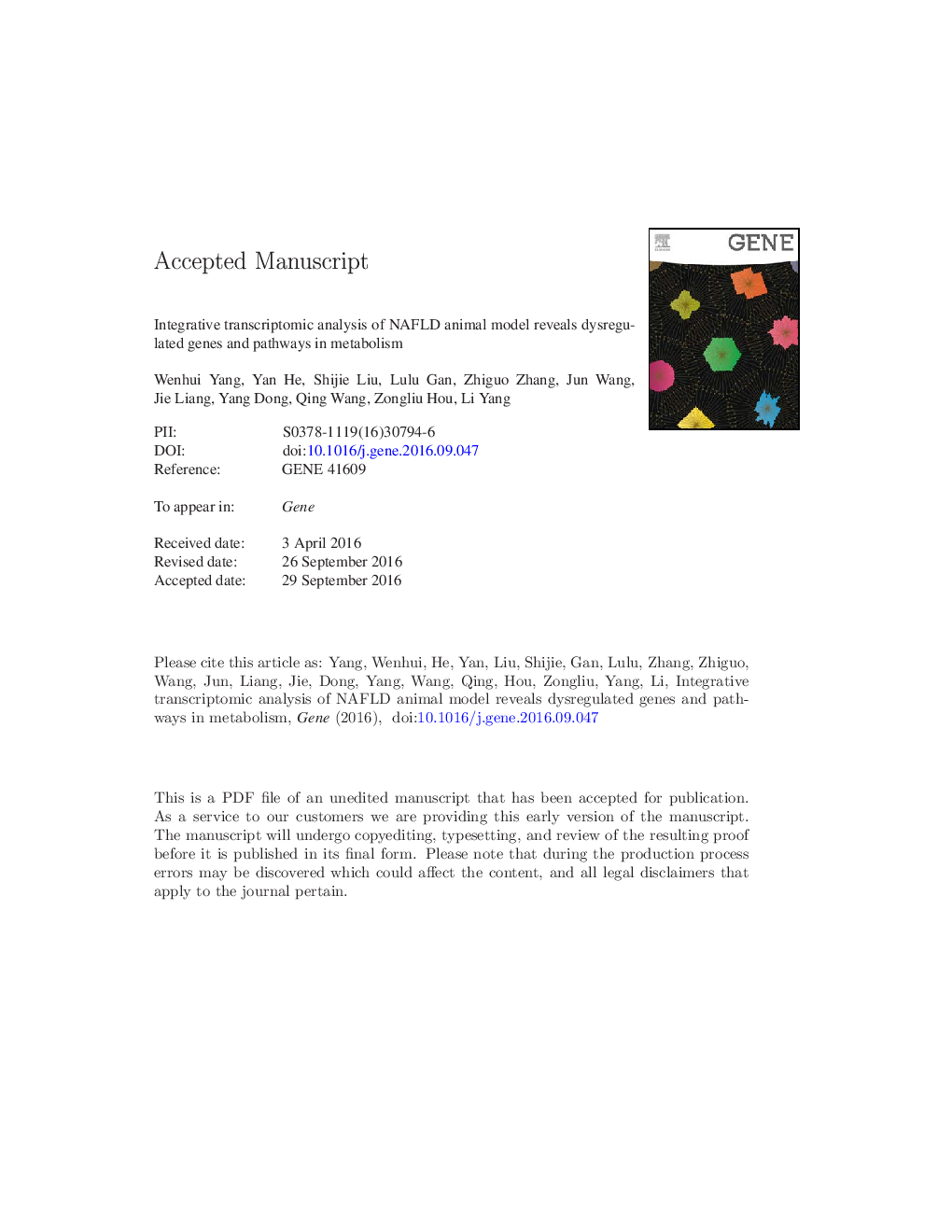| Article ID | Journal | Published Year | Pages | File Type |
|---|---|---|---|---|
| 5589850 | Gene | 2016 | 36 Pages |
Abstract
Dysregulation of metabolism in hepatocytes leads to hepatic diseases such as hepatitis and non-alcoholic fatty liver disease (NAFLD). NAFLD represents a spectrum of liver diseases ranging from simple steatosis to nonalcoholic steatohepatitis (NASH). NASH is likely to progress to cirrhosis, liver failure and hepatocellular carcinoma, which lead to poor long-term prognosis. However, the exact mechanism of development of NAFLD is not well elucidated. In order to better understand the pathogenesis of NAFLD, we have performed an integrative analysis to livers from NAFLD rat models in a global view of the transcriptome. By systemic and integrative analyses, we have found that transport, angiogenesis and cell adhesion were upregulated in response to high fat diet feeding, which may cause a large amount of free fatty acid transport, hepatic fibrosis and hepatocytes injury. GO tree analysis has shown that angiogenesis was upregulated. GO term in response to high fat diet which may cause fibrosis. The pathway interaction network has indicated that upregulated “valine, leucine, and isoleucine metabolism” may decrease the serum concentration of branched-chain amino acid (BCAA). The enhanced degradation of BCAA in NAFLD animal models may lead to inhibition of the regeneration of hepatocytes, reducing the production of albumin, attenuating the inhibition of liver cancer and decreasing immunity. Overall, high fat diet upregulated a variety of metabolism which have converged at TCA cycle. High fatty has pushed the hepatic mitochondria to a “busy state”. Comprehensively, genes participated in dysregulated biological process and metabolisms may be served as indicators for evaluation of NAFLD progression and therapeutic targets.
Keywords
Related Topics
Life Sciences
Biochemistry, Genetics and Molecular Biology
Genetics
Authors
Wenhui Yang, Yan He, Shijie Liu, Lulu Gan, Zhiguo Zhang, Jun Wang, Jie Liang, Yang Dong, Qing Wang, Zongliu Hou, Li Yang,
